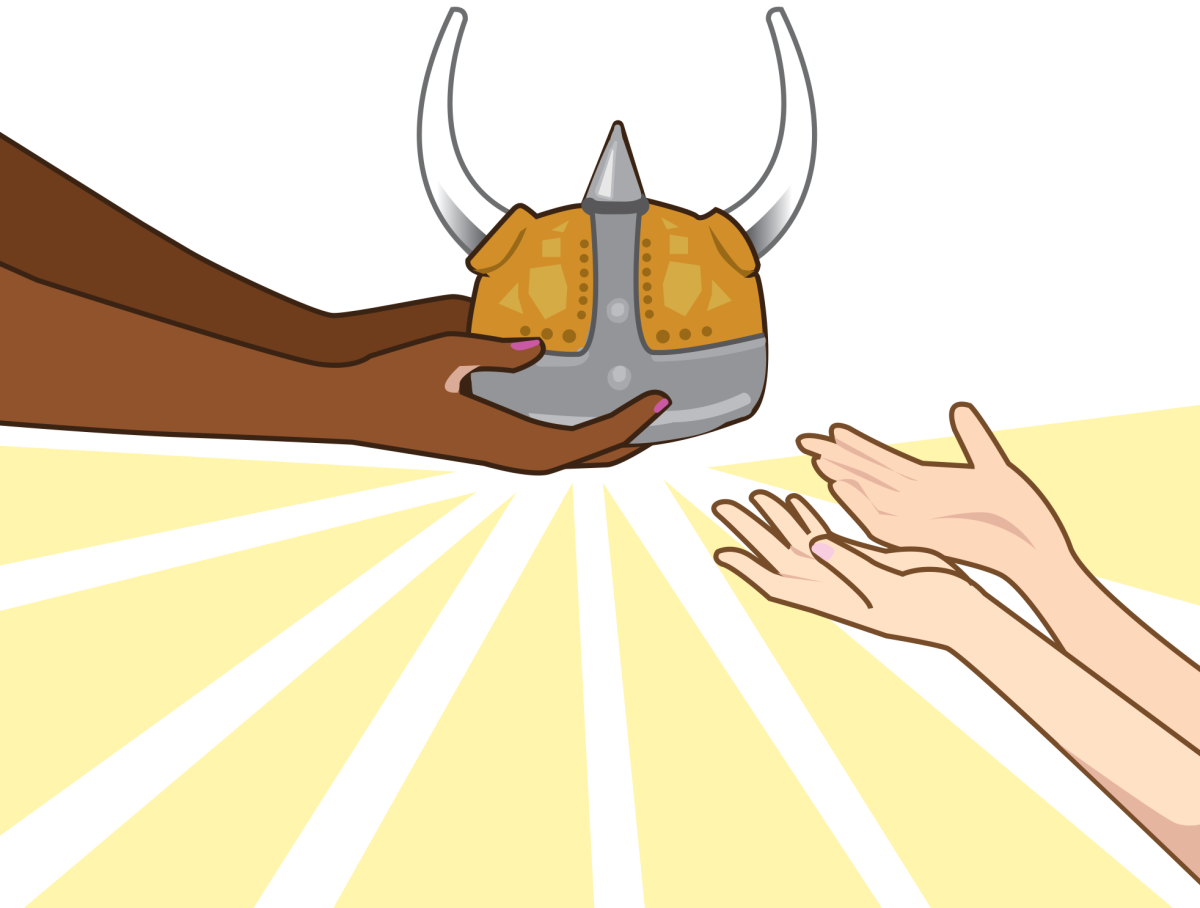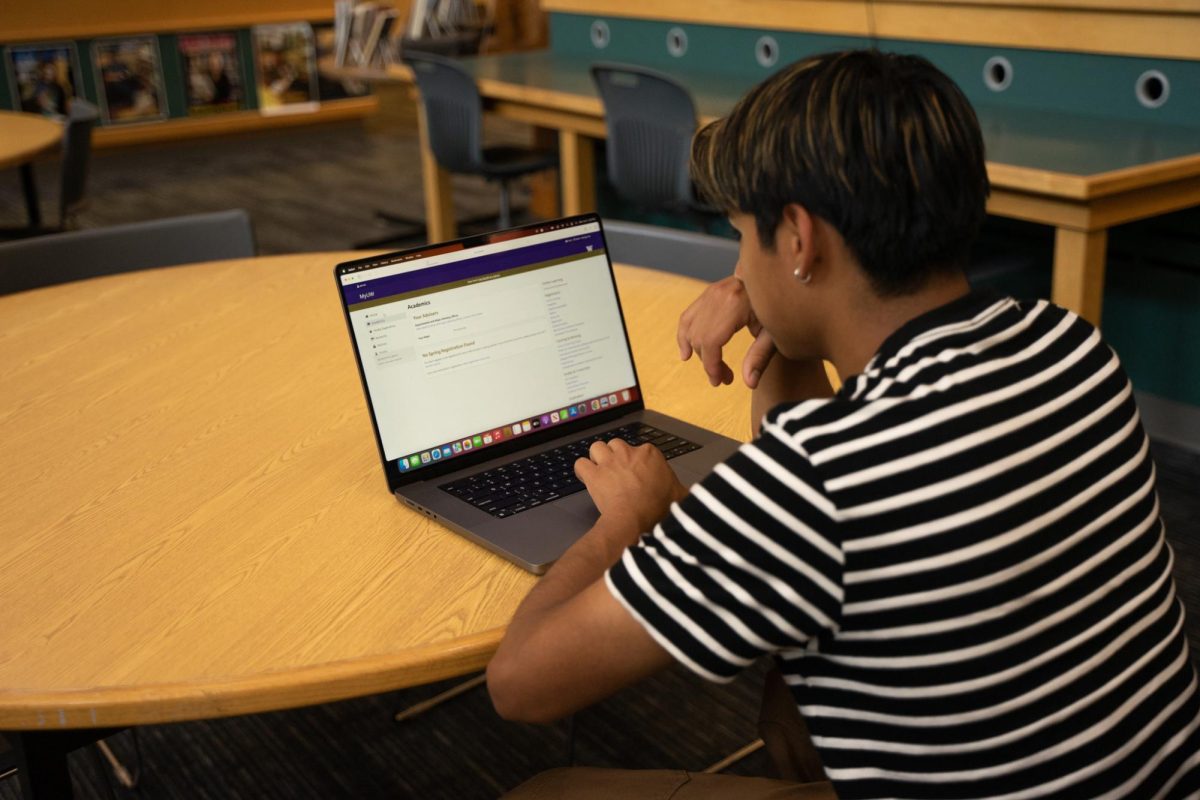In preparation for the opening night of “Peter and the Starcatcher” on Jan. 27, the tech theater team began their tech week on Jan. 23. Tech week, lovingly known as “hell week,” is the period leading up to a show when the whole theater department, known as the Valhalla Players, practice full run-throughs of the production and fix any last-minute problems. Tech theater students, or techs, spend the week working in-class and after school with the actors.
Tech theater is an elective class where students work together to handle all the technical aspects of producing the school’s plays such as set building, lighting, sound and more. In addition to tech theater, students can also join tech crew, which is an after-school club also dedicated to play production. Students do not have to be in a tech theater class to join tech crew. The main difference between tech theater and tech crew is that tech theater spends the bulk of their time building sets during school hours and tech crew spends theirs working out other technical aspects of the shows after school.
A new technical aspect of “Peter and the Starcatcher,” commonly referred to as PATS by the techs, is ASL translation. In order to make the play accessible for deaf and hard-of-hearing audience members, senior translator Morgan Wiese (she/her) has been working with a group to translate the script for PATS into ASL. Wiese said deaf representation and inclusion is something the Valhalla Players’ shows have been missing.

“Last year, there was an interpretation we were trying to get implemented for ‘Addams Family,’ but we didn’t have a big enough budget.”
Lack of money in the theater department has affected more than just ASL translation efforts. Senior weapons master Emily Fix (she/her) said the theater departments in NSD often loan props, costumes and set pieces to one another. However, some items needed for a production may be too specific to buy or borrow. In that case, the techs work together to craft something.
“We’re pretty broke. So we get pretty creative with what we make,” said senior props master Lain Harold Rufo (she/they).
Since the sets that tech theater builds are homemade, they use a lot of everyday objects to make them. Tech theater has used cardboard and spray paint to make stars, styrofoam to make fake fruitcake and even a stuffed yak to make a dead goose prop for the PATS show. Techs have varying levels of experience and involvement with tools, depending on their role. For instance, Harold Rufo, who works primarily with props and set building, uses a wide array of tools, such as jigsaws, exacto knives and drills. She stressed the importance of learning to use these tools.
“We don’t have a lot of hands-on classes here at Inglemoor,” said Harold Rufo. “We need more hands-on classes where kids get to build stuff and craft stuff. That’s really important, and we don’t get enough of it.”
Meanwhile, junior ASL interpreter and deck tech Kierra Robinson (she/they) said she prefers to focus on the artistic side of tech theater rather than construction, and rarely uses heavy machinery or power tools.
“Normally, I don’t really build, so I do more painting and stuff like that. But when I do use tools, it’s usually just box cutters.”
In the professional theater world, the people who design the sets for a show are different from the people who build those sets. This is usually true for the Valhalla Players’ productions, but for PATS, senior stage manager Bren Bartol (they/he) designed most of the set.
“I went to Pinterest and looked up ‘Peter and the Starcatcher sets’ and then looked at all these different sets and picked different things I liked. And then I probably drew out, like, eight before I found one that I actually liked.”
To make Bartol’s vision come to life, the techs had to work hard to create realistic props, but some things couldn’t be made so easily. Fix, who manages prop knives, spears and daggers for the PATS show, said the department had to borrow prop weapons from other schools’ theater departments. Shows that involve weapon props require specific techs assigned to manage those props for safety reasons.
“If you give an actor a sword, then you need to make sure that you get that back right away when they come off stage, so that it’s not a liability,” said Fix.
Tech crew works hard during shows to keep everything running smoothly. During scene changes, deck techs are the people dressed in black hurriedly moving set pieces and props around. When an actor briefly exits the stage for a quick costume change, techs are there to help them. If something unexpected happens during a show, the techs work together to make sure the show goes on.
Sophomore props tech Joy Flahiff (she/her) said tech crew is constantly fixing things during shows, including broken props, such as in the last play, “Puffs.”
“During ‘Puffs,’ one of the stairs broke on stage. We drilled it during intermission. As people were talking, we had a little screw gun drill, and we fixed it.”
During shows, especially when something goes wrong, tech crew tries to stay organized. Flahiff said that being organized and having patience helps tech crew eliminate issues before they appear. Junior deck tech Jillian Rector (she/her) emphasized the importance of communication in tech theater and highlighted the adaptability of the tech crew and their roles.
“I like the freedom you have with it: you can choose so many different aspects of it. You don’t have to stick to just one.”


![[From left to right] Junior Lauren Dellinger (they/them), sophomore Flare Antrobus (they/them) and senior Seth Karlinsey
(he/him) make mermaid hair pieces on Jan. 23, 2023.](https://nordicnews.net/wp-content/uploads/2023/01/IMG_1116.jpg)









